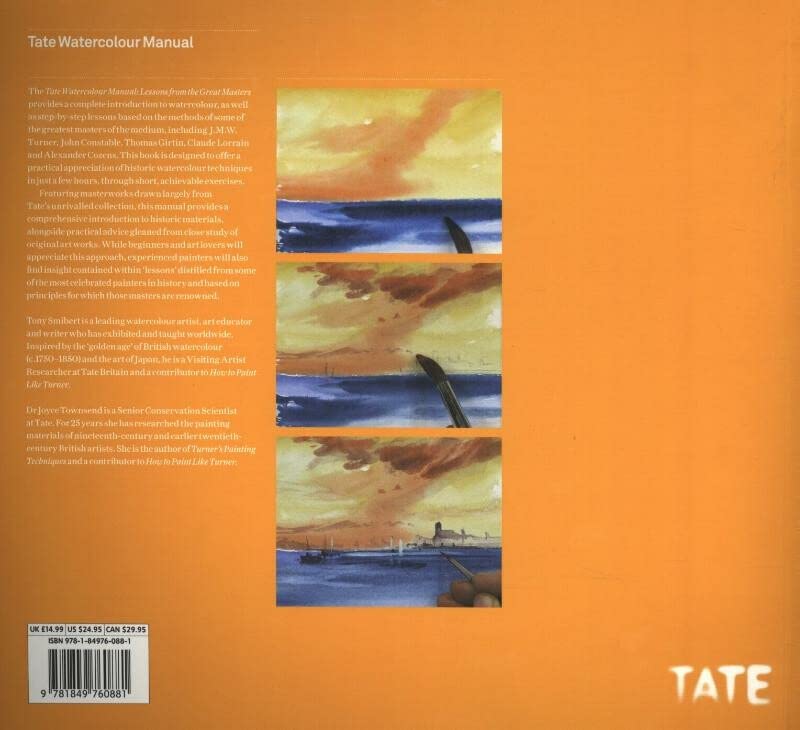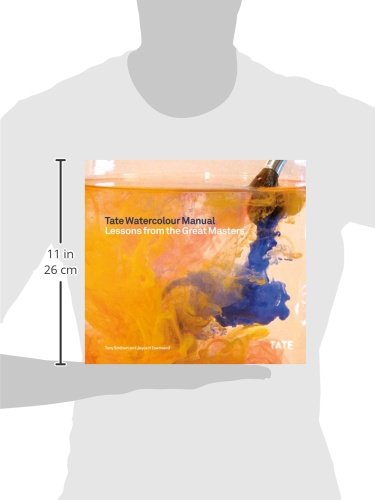Sobre nosotros
Servicios al cliente
Atención al cliente
Acceso Regional
Legales y políticas
Obtén la aplicación

Apunta tu cámara para descargar la aplicación
Copyright © 2024 Desertcart Holdings Limited




Tate Watercolour Manual Lessons from the Great Masters
M**B
Book title should reflect the content "Tate Watercolour Manual" it does not
Pages of this book have been lifted from the book "Turner's Apprentice A Watercolour Masterclass" by one of the Authors Tony Smibert. Tony Smibert is an Acrylic/Gouache painter some of the examples can only be created using opaque paint (Which Watercolour is not) . Tony Smibert is one of the authors of this book.OK it's not plagiarism as it was originally written by Tony Smibert, but I expect to find original text in a book not just a repeat of what he wrote in another book. Especially as it is off topic. Nothing to do with watercolour being Acrylic/Gouache paint medium mentioned.I was rather disappointed to find references to Acrylic/Gouache paint in the Tate Watercolour Manuel a medium I have no interest in.Initially I thought the book was well written but progressing through it I found it was a waste of time and money.
J**Y
One of the best books a watercolour artist could ever read
From the description: "be a more assured and better artist, or simply gain new understanding of the great British watercolourists."And non-British watercolourists too, such as French painters, Claude Lorrain and Jean-Baptiste-Camille Corot and Russian artist Alexander Cozens.There are nine artists portrayed in this book. Along with the above mentioned three artists, there are six British artists: John Sell Cotman, J. M. W. Turner, Thomas Girtin, John Constable, David Cox and John Ruskin. There are biographies - along with art works and techniques used - all wonderfully displayed in quality colour and published on quality paper.The instructional pages (generously displayed and often numerous) of the techniques employed by these artists are absolutely stunning and along with the 45 pages that precede the main section which include 25 pages concerning the nature of watercolour, paper, brushes, drawing materials, pigments, paint boxes, advice for schools, art work preservation along with a 7 page introductory course and the 17 pages that follow the main "Masters" pages, make for a top-shelf book that artists will enjoy, yeah, love. Highly recommended.
D**E
A practical book
I purchasd this book after doing an online watercolur art course with St Ives School of Art and it was recomended. The chapters all have recommended practical studies to do that helped me gain from the examples of watercolur art and artists. There are references to early watercolourists and painters and their styles.The book is aimed at those starting watercolours as well as experiensed artists. A good book if you want to find a bit more about watercolour artists and also to improve your own painting skills.
J**Y
BY NO MEANS EVERY WATERCOLOURIST'S CUP OF TEA
I'm not an adherent of that school of art appreciation which believes that just because a painter is dead, he automatically qualifies to be categorised as a "master" or that his art ipso facto becomes "great". In fact, to my contemporary eyes, there are vast numbers of contemporary painters working away around the world whose works are far superior to most of what was produced one, two or three centuries ago. This applies in spades to watercolour - which has advanced out of all recognition in more recent times, both in terms of the materials and equipment available, and the skill and techniques employed.For example, I think it a retrograde step - if not daft - to make "brushes" out of wood shavings tied to a stick, and to soak expensive watercolour paper in water for hours to remove the sizing... Both suggested in this book.I'm not a fan of Australian Tony Smibert's work, either; it's just not to my personal taste (amongst the antipodeans, Joseph Zbukvic stands high in my estimation, for example). Nevertheless, when the Tate Gallery publishes a watercolour how-to-do-it book, and you're a collector of this genre, you feel obliged to take a look at it. But I expected to be disappointed, and I was.In keeping with previous practice, the Tate does not enable Amazon's "Look Inside" feature; this may well be because they know that a number of watercolourists, having looked inside, will decide that this book is not for them. I tried to add images of sample pages, but Amazon wouldn't allow that, either. E-mail me (see profile) if you want to see them.If you are (a) interested in the history of watercolour painting, and/or (b) want to create watercolours that look as if they were produced with 18th century materials and techniques (or with woodshavings on unsized paper), then this is very definitely a good buy for you. But if you want to learn a little about how to use modern materials to their very best advantage, then it equally definitely isn't.If you want an alternative, recently-published, "new-look" watercolour how-to-do-it work, try instead Charles Williams' hugely entertaining "Basic Watercolour: How to Paint What You See", which I haven't reviewed at the time of writing, but will be doing so shortly.
E**P
Useful and enlightening
Direct and honest approach to techniques using the best examples. Gives some relevant art history. Stimulating and encouraging. Best technique book I have seen.
M**R
Great book on Watercolour painting.
A great very interesting book. Just follow the instructions. See how the Masters used Watercolours.
K**N
Excellent
Excellent Tate book on techniques and ideas for artists using watercolour and incorporating other mediums....similar format to the Paint Like Turner book. Recommended
S**U
Watercolour techniques
Haven't read it all yet but I'm looking forward to learning more about watercolours.
Trustpilot
Hace 1 mes
Hace 5 días